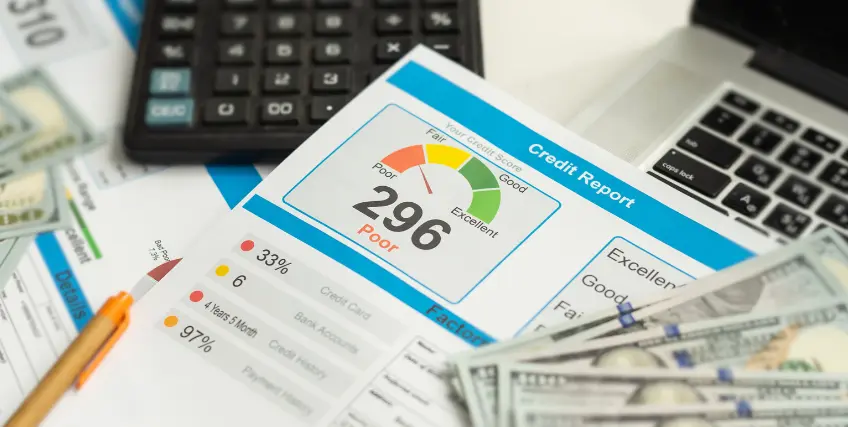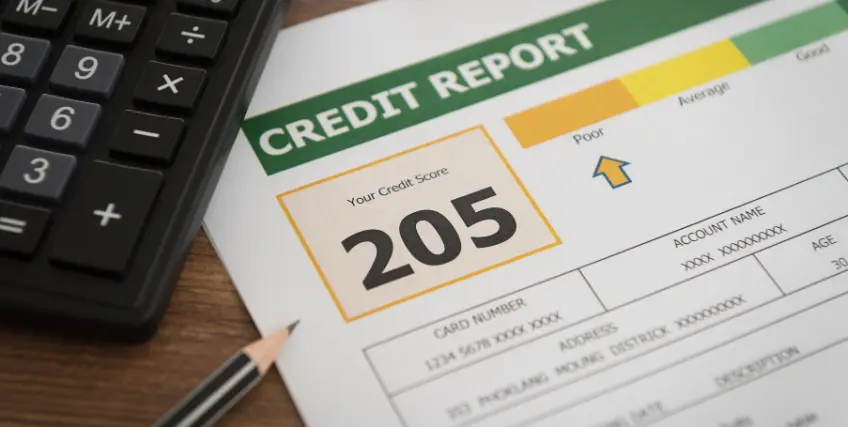How Small Businesses Can Analyze Cash Flow from Assets
October 17, 2024 | Last Updated on: October 17, 2024

Disclaimer: Information in the merchant cash advance articles is provided for general information only, does not constitute financial advice, and does not necessarily describe Biz2Credit commercial financing products. In fact, information in the merchant cash advance articles often covers financial products that Biz2Credit does not currently offer.
The ultimate goal of a small business is to become a profitable venture for a small business owner. The key metric for determining profitability is cash flow. Cash flow shows how much money a business is generating after every expense in real terms. Cash flow analysis from assets and understanding how to improve cash flow management is fundamental to any small business’s operations.
Here, we cover everything you need to know about cash flow, its importance for your small business, and how to calculate and interpret cash flow. This will provide you with a template to start your own cash flow analysis from assets.
In this article:
- Take a deep dive into cash flow, what it is, and how it contributes to your business’s smooth operations.
- Learn how to translate your cash flow analysis from assets into sustainable asset management strategies.
- Explore cash flow loans and cash flow lenders to help you improve your asset-based cash flow and keep your business running smoothly.
What is Cash Flow?
Put simply, cash flow is a company's change in cash after all expenses are paid. It reflects all of a company's cash inflows and cash outflows in a given period. Cash flow is distinct from net income because it deals with non-cash expenses like depreciation to arrive at the actual change in the cash position of the small business.
Cash flow is not the same as the bottom line of a business. Rather, it’s the change in the cash balance of your small business over time. It’s a helpful measurement of whether you have enough cash in your business for possible future expenses.
Why is Cash Flow Important for a Small Business?
Cash flow is vital for a small business for a variety of reasons. It demonstrates your company’s ability to make future purchases in cash or take on certain debt repayments. Overall, it’s a very important metric of financial health in your business.
Chances are that your small business will need financing at one point or another. If you need to do repairs, remodel, renovate, order new equipment, inventory, or other expenses, you may need to take out a business loan. Your cash flow will affect your loan eligibility, including those with lower interest rates. Investors and cash flow lenders conduct cash flow forecasting to determine what financing your small business can get.
Likewise, if you are planning on raising equity or selling your small business one day, investors will be interested in their projected returns. One of the best ways that they can project returns is from your statement of cash flows. If you have better cash flow, you are likely to get better offers when it comes to investors seeking to buy some or all of your business.
Finally, cash flow analysis from assets can help you determine where your business needs to improve its cash flow, setting it up for a more profitable position. Some of these improvements can be made by increasing your sales revenue or operating income, but other changes simply focus on logistical improvements you can make with your business operations.
Understanding a Cash Flow Statement and Cash Flow from Assets
Cash flow is reported on a cash flow statement. The cash flow statement shows the inflows and outflows of cash based on the activities of your small business in a given time period. The demarcation of different categories on the cash flow statement allows you to understand the cash flow breakdown by activity.
Overall, a cash flow statement shows the sources of cash inflows and the expenses on which cash is spent. In doing so, it shows a business's liquidity and paints a picture of a company’s financial health.
Financial Statements to Know
There are three standard financial statements in accounting which inform your company’s cash flow analysis from assets. They are:
- Income statement: Starts with revenue and works through a business’s cash and non-cash expenses to arrive at a number for net income, also known as the bottom line.
- Balance sheet: Reflects a snapshot of a business’s balance of assets, such as cash and cash equivalents, with liabilities, including debt and shareholder’s equity
- Cash flow statement: Starts with net income and adjusts for non-cash expenses to get the actual change in cash position.
Cash Flow Statement Details
A cash flow statement starts with net income and adjusts net income to arrive at free cash flow after these three categories known as cash flow from assets:
- Cash flows from operating activities: Adjust from the sale of goods and services of a business.
- Cash flows from investing activities: Adjust based on the income from investments that a business is making, such as capital expenditures.
- Cash flows from financing activities: Adjust based on the income a business is making or losing from debt or other interest-based financing activities.
After adding the subsequent changes in cash from these three categories to net income, you arrive at asset-based cash flow. This cash flow number is the complete summary of your cash flow from assets and can assist in future asset management strategies.
Calculating Cash Flow
Understanding cash flow calculations can help you develop asset management strategies and operational strategies.
First, you must know the type of accounting that your business uses. Your accountant, you, or your accounting software will likely be able to tell you which accounting method you use. There are two primary methods of accounting: cash basis and accrual basis.
Cash basis accounting is usually used by very small businesses with uncomplicated setups or structures that would necessitate close accounting. In cash basis accounting, you record cash only when you receive money from customers in a period. This allows you to use a direct method of cash flow calculation, which means that your cash flow is calculated by taking all cash inflows and subtracting all cash outflows from cash inflows.
Your small business likely uses accrual accounting if you have a lot of revenue and employees or generally have a difficult structure to keep track of cash constantly. It’s used by most businesses. Accrual accounting is more helpful in understanding the cash in the business when it is reasonably earned. This means that you can more accurately understand when sales are happening versus when cash is hitting your bank account.
If your small business uses accrual accounting, you will use the indirect method to calculate its cash flow. Net income is the top line of the cash flow calculation, where each of the three categories is added to show the change in the amount of cash in the business to determine the net cash in the business at the end of the period.
Performing Cash Flow Analysis on Cash Flow from Assets
Now, it is time for your cash flow analysis from assets to get specific. A deep understanding of cash flow problems and how to fix them will help you find success as an entrepreneur. Separating your cash flow into types of cash flow from assets can help you determine how best to fix your small business’s asset-based cash flow problems.
Cash Flow from Operating Activities
Cash flow from operating activities deals with the business's operating activities. In other words, these are the general sales and expenses of the business, which may impact budgeting among other asset management strategies.
Accounts Receivable
Accounts receivable is a huge influencer of cash flow in your small business. Accounts receivable is the outstanding payments that your business will receive from customers you have already served and delivered the good or service. You’ve completed a service, but you have yet to receive the funds from this sale. As a result, this money is known as accounts receivable and represents a current asset of your business.
While accounts receivable sales are recognized as revenue in the income statement, they will not be recognized similarly on the cash flow statement. Accounts receivable must be subtracted from the net income number because the cash from accounts receivable has not reached your small business. Since this is an operating activity, accounts receivable will negatively affect your cash flow from assets for cash flow from operating activities.
Negative accounts receivable may indicate your small business has an issue collecting sales. If this is a persistent problem, you might want to consider a cash flow loan to help you free up working capital while waiting for payments to process.
Accounts Payable
Accounts payable may also influence your cash flow positively. Accounts payable is the payments that your small business still needs to make even though you have already received the products or services from another company. The cash is still in your business since you have not paid those companies.
This artificial increase in cash flow may be bad since accounts payable flow from your current liabilities. Having too many accounts payable can inflate your cash flow numbers. It’s also important to note that accounts payable specifically affect cash flow from operating activities as part of your cash flow from assets.
Some businesses consider having larger accounts payable as a good thing since it inflates their cash flow from assets. However, it’s still important to note the effect of accounts payable on cash flow when analyzing why your small business might have such high cash flow.
Inventory
Inventory further impacts your cash flow. As you sell inventory, your cash flow theoretically increases due to the purchases of your goods. However, when you buy inventory, your cash flow decreases as you use your cash to buy goods. Buying and selling inventory is an operating activity of your small business.
In cash flow analysis from assets, you should look at your inventory purchase business expenses and your sales. This can help you tell a story with your cash flow and understand one of your important long-term assets. Your cash flow might be unusually high if you have had massive sales with comparatively fewer inventory purchases. Likewise, if you buy a lot of inventory, your cash flow might be decreased or go negative. You can try to optimize these to improve your cash flow in a given period of time.
How to Increase Cash Flow from Operating Activities
Some of the best ways to increase cash flow from operations include:
- Raising prices: A price raise might contribute to a greater cash flow from operating activities. Having a good pricing strategy is important for this.
- Reduce production costs: By reducing the costs of your goods and services, you leave more cash left over at the end of the day, increasing your cash flow from operating activities.
- Reduce operating expenses: Reducing spending on operations might make it possible to have more money reach the bottom line. In turn, this can create additional cash flow from the asset of operating activities, improving your operating cash flow.
Cash Flow from Investing Activities
Cash flow from investing activities is essentially the business activities that involve making capital expenditure investments or investments in external companies.
If your small business has recently made a large investment in some capital product, your small business might be experiencing an outflow of cash. As such, your cash flow may be reduced for a certain period.
How to Increase Cash Flow from Investing Activities
Improving your working capital can help improve your small business’s cash flow position. By investing less in investments outside of your company and reducing the amount of money that you need to pay in loans, you can improve your cash flow from assets in both financing and investing activities.
Increasing your asset-based cash flow by getting a cash flow loan may help offset the cost of growth-minded investment activities.
Cash Flow from Financing Activities
Cash flow from financing activities is the debt and financing that a business receives and has to pay. If your business takes out a loan or another form of debt at the start of a period, it will show up as positive cash flow. If your business is making payments on the debt, this will represent negative cash flow.
Debt is very common for small businesses, and debt payments contribute to decreasing the cash flow of a business through the monthly payments of principal and interest amortization. Your small business might take on debt for a variety of reasons, such as expanding your business, buying new equipment, or repairing a part of your small business.
When you get debt from a cash flow lender, the money coming from the loan will increase the cash flow on your cash flow statement. This can inflate your cash flow and is something to pay attention to if one of your cash flow statements is affected by cash from a loan going into your business.
How to Increase Cash Flow from Financing Activities
Since financing is always a debt, increasing cash flow from these activities is more about reducing monthly obligations rather than increasing cash flow.
While debt payments decrease your cash flow, there may be reasons why that’s not such a bad thing. For example, debt might be cheap and a good way to invest in and harness future returns. In this case, decreased cash flow might not be a large problem.
Conclusion
Biz2Credit, is dedicated to small businesses and their owners. As part of this, we work diligently to provide them with the tools and resources they need to help their companies succeed. That’s why we run our Biz2Credit Blog, where we post new content each weekday. So, please continue to check back here to read our latest articles on everything small business and financing related.
FAQs
What is cash flow?
Cash flow is the amount of assets a business has after subtracting all cash outflows from cash inflows in a given period. Essentially, it’s the amount of money a company has on hand after all expenses are paid.
Why does cash flow matter for a small business?
Cash flow is important for myriad reasons. For one, positive cash flow makes it easier for businesses to fund operational activities and invest in growth, while negative cash flow makes it difficult to meet liabilities and expenses. Likewise, lenders use cash flow forecasting to determine your company’s eligibility for financing as it’s a good indicator of financial health.
What are the three types of cash flow on a cash flow statement?
A cash flow statement adjusts net income to arrive at free cash flow. You can do so by breaking down cash flow from assets into three categories:
- Cash flows from operating activities: The sale of goods and services of a business.
- Cash flows from investing activities: The income from investments that a business is making, such as capital expenditures.
- Cash flows from financing activities: The income a business is making or losing from debt or loans.
What are the two primary types of accounting?
The two accounting standards in the U.S. are accrual basis and cash-basis accounting.
- Accrual accounting is used by larger companies with complicated revenue and expense balance sheets.
- Cash basis accounting is used by small, uncomplicated companies to directly subtract cash outflows from cash inflows.
How can you increase cash flow?
Some of the most common ways businesses increase cash flow is by raising prices, investing in sales or marketing campaigns, reducing expenses, and by getting cash flow loans.
Frequent searches leading to this page
term loan, financial reporting standards, funding a small business, small business loans for women
Recent Articles
Related Articles

Avoiding the Debt Trap: How Stacking MCA Business Financing Can Hurt Your Business Credit
November 7, 2024

Why MCA Business Funding May Be Ideal for Retailers Looking to Expand Inventory
November 5, 2024

Merchant Cash Advance vs. Asset-Based Lending: Which is Right for Your Business?
October 29, 2024

Merchant Cash Advance vs. Traditional Business Loans: Which is Right for Your Business?
October 28, 2024

Merchant Cash Advance vs. Line of Credit: Which is Right for Your Business?
October 25, 2024

5 Things Every Small Business Owner Wishes They Had Known When They Started
October 18, 2024






























